I’m gonna go out on a limb here and say when you think of visiting sugary white sand beaches and turquoise waters in December, the shores of Lake Michigan are probably not the first thing that comes to mind. But that’s exactly where I found myself, exploring Indiana Dunes National Park on a beautiful, but chilly December day. Established in February 2019, Indiana Dunes is one of America’s newest National Parks, and also one of its most diverse and underrated. And best of all, it’s one of the few National Parks that does not charge an admission fee.
Update: Beginning 31 March, 2022, Indiana Dunes National Park will charge $25 per vehicle to enter the park.
A Brief History of the Indiana Dunes
In 1899, Henry Chandler Cowles, a botanist at the University of Chicago, began the first movement to preserve what’s now the Indiana Dunes. Cowles’ movement cited the unique flora at the dunes as the reason to preserve the area. The movement rapidly gained momentum. By 1916, the National Parks Service held hearings in Chicago about preserving the area as Sand Dunes National Park.
Unfortunately, local manufacturing plants had discovered that the sand at the Indiana Dunes was ideal for making glass. As a result, the 1916 hearing went nowhere. Glass manufacturing had completely consumed one of the most famous dunes by 1920. Facing backlash from the local residents, the State of Indiana stepped in and designated the area as Indiana Dunes State Park in 1926. You can still see evidence today of the manufacturing that went on at the Indiana Dunes in the early 20th century.
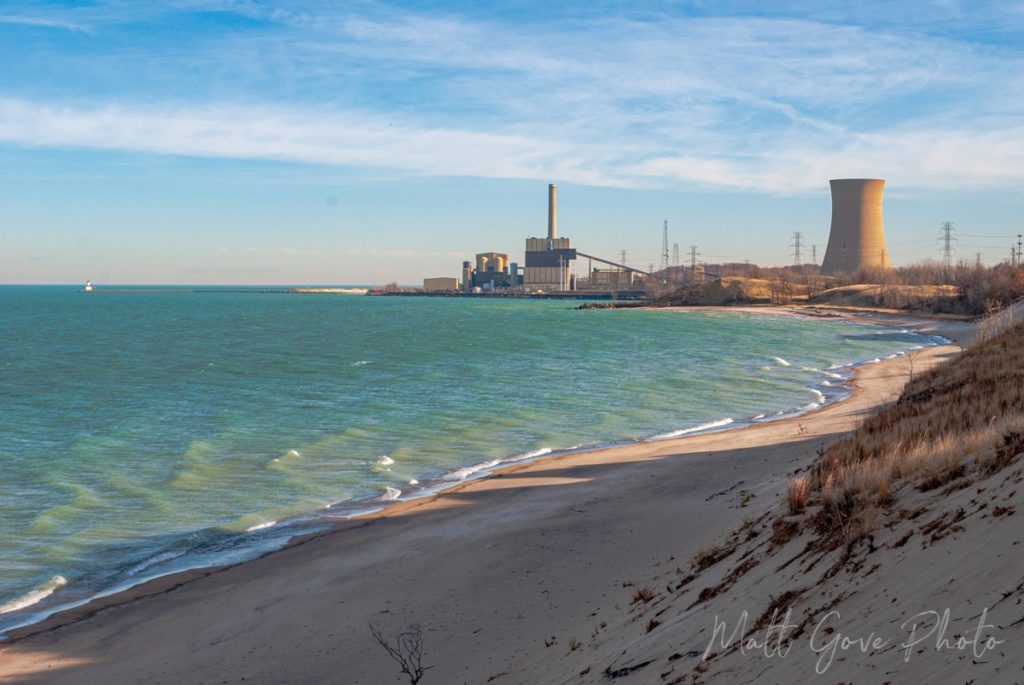
The federal government didn’t show any interest in the Indiana Dunes until the 1950’s. Preservation efforts ramped up again when a Port of Indiana was proposed to maximize economic development in the area. Activists began a nationwide campaign to buy the land and preserve the dunes. Their efforts were successful. In 1966, the U.S. Congress passed a bill to preserve the area as the Indiana Dunes National Lakeshore. Between 1976 and 1992, Congress expanded the national lakeshore four times, bringing it to the size it is today.
In 2017, both senators and representatives from Indiana sponsored a bill to turn the Indiana Dunes National Lakeshore into a National Park. While it took a couple years to finally get a vote on the bill, it passed Congress and became law on 15 Feburary, 2019. Indiana had its first National Park.
Where is Indiana Dunes National Park?
Indiana Dunes National Park covers 15 miles (24 km) of shoreline on Lake Michigan between Gary and Michigan City, Indiana. It’s just a 45 minute drive from both downtown Chicago and South Bend. If you’re coming from further away, the dunes are an easy day’s drive from Detroit, Indianapolis, much of Ohio, and even St. Louis.
The Indiana Dunes Can Migrate Up to 18 Feet Per Year…and Swallow Everything in Their Path
Indiana Dunes National Park has some of the most fascinating geology east of the Mississippi. At times, the dunes can behave like a living, breathing creature. In fact, the U.S. Geological Survey makes quite a statement about them on their website.
Dunes in the park are still actively migrating downwind. They move as layer after layer of sand is blown from the front of the dune over to the slipface. The most active dune, Mount Baldy, can move up to 18 feet in a year, swallowing up entire trees as it advances.
U.S. Geological Survey
When I first read that, I thought, “Come on. I get that dunes are always moving, but entire trees? Really?” When I got to Indiana Dunes National Park, Mt. Baldy happened to be my very first stop. When I pulled into the parking lot, this is what I saw. Insert foot into mouth.
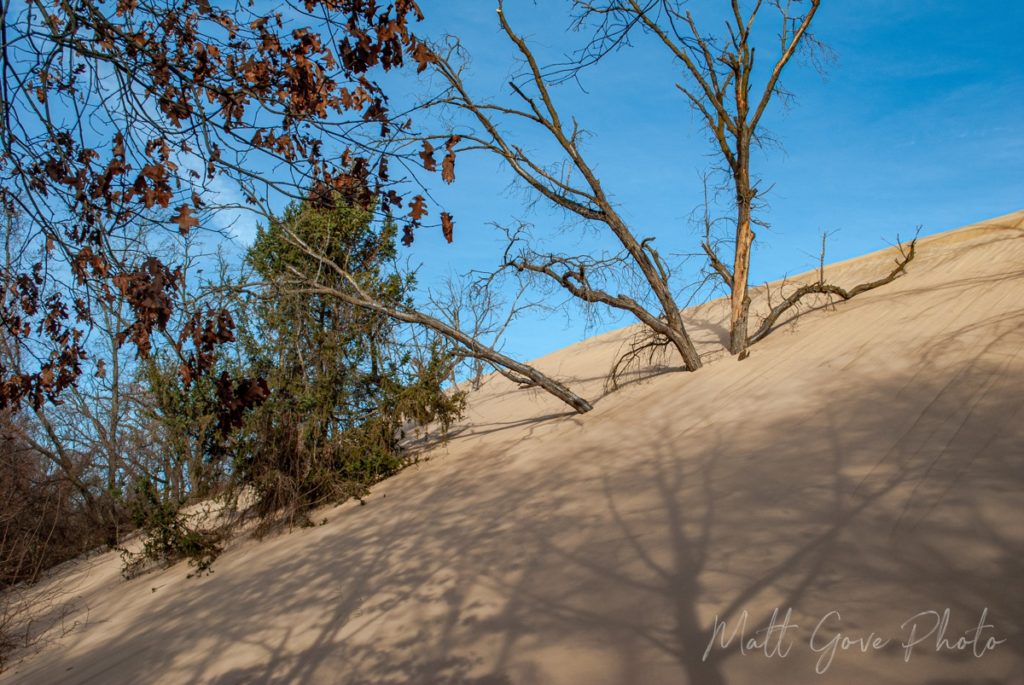
Interestingly, I continued to notice the dunes just swallowing everything as I made my way through the park. Trees, signs, benches, parking lots. You name it, the dunes were swallowing it. The Indiana Dunes actually remind me a lot of White Sands National Park in New Mexico. Both parks have a lot of fine, sugary sand. Dunes are constantly in motion, advancing and retreating as the wind shifts throughout the year. However, unlike White Sands, the sand at Indiana Dunes National Park does not dissolve in water.



Indiana Dunes National Park Offers Outdoor Activities Year Round
While Indiana Dunes is best known for its summer recreation and relaxation, the park offers an abundance of outdoor activities year round. Don’t discount the shoulder or offseason. There is plenty to do, and the lack of crowds in any National Park makes for a completely immersive and memorable experience.
- Hiking
- Biking
- Swimming and Sunbathing
- Boating
- Cross Country Skiing, Snowshoeing, and Sledding
- View the spectacular shelf ice on Lake Michigan in the winter
- See beautiful colors in the fall
- Scenic Drives
- Birdwatching and Animal Watching
- Horseback Riding
- Camping and Picnicking
- Learn About the History of the Area
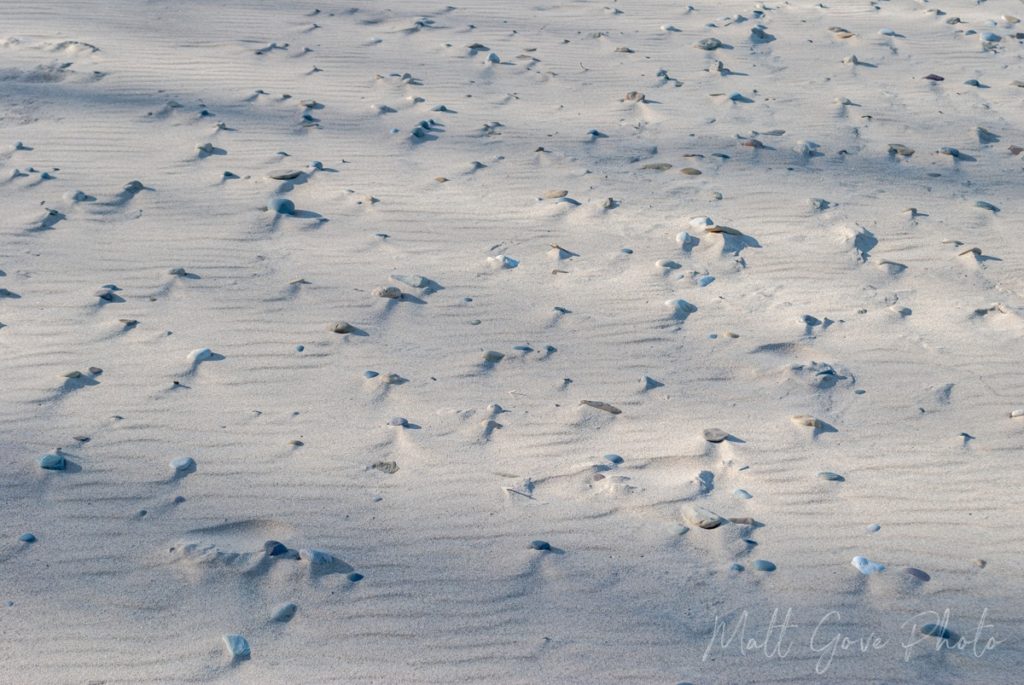
Take in Breathtaking Views of Lake Michigan
For being in a state that has a reputation of being very flat, the Indiana Dunes offer an incredibly diverse choice of absolutely stunning viewpoints and lookouts over the turquoise waters of Lake Michigan. Hike up to the top of the tallest dunes and paths for stunning panoramic vistas nearly 200 feet above the lake. Alternatively, soak in the sun and scenery from lake level as you walk along the beach or wade in the water. I could go on and on here, but I’ll let the photos speak for themselves.






See Indiana’s Rarest Flora and Fauna
Indiana Dunes is one of the most diverse regions in the United States. The park is home to some of Indiana’s rarest flora, as well as many species of fauna. If you’re looking for a specific species, make sure you know the best season for viewing them before you plan your trip. If you don’t have a specific species in mind, the Indiana Dunes boasts both spectacular fall colors and an incredible variety of wildflowers in the spring. Even when I visited in early December, it’s easy to get caught up and absorbed in nature. There was no shortage of plants and animals to look at in the winter.
Indiana Dunes Photography and Videography Tips
To get the most from your photo or video shoot, you’ll want to spend at least one full day at the park. Take advantage of the Golden Hour at both ends of the day to get some spectacular sunrise and sunset pictures. Let the low light bathe the dunes in vibrant warm colors. During the day, shift your focus to the water. Let the powerful midday sun bring out the best teals, blues, and greens in Lake Michigan. Additionally, go for a hike or a scenic drive to photograph some of the lesser seen parts of the park in the woods, marshes, grasslands, and other surrounding areas.





Furthermore, Indiana Dunes National Park offers so many different stories you can tell through your photos and videos. Whether you’re into nature, history, recreation, or anything else, there’s a story for you to tell. I encourage you to partake in any of the activities we discussed earlier to help you tell your story.
Best Locations to Shoot Photos and Videos
You can take great pictures and videos pretty much anywhere inside Indiana Dunes National Park. But here are my favorite places for a shoot.
- Mt. Baldy
- Central Avenue Beach
- Dunbar Beach
- Porter Beach
- Forest scenery along US-12
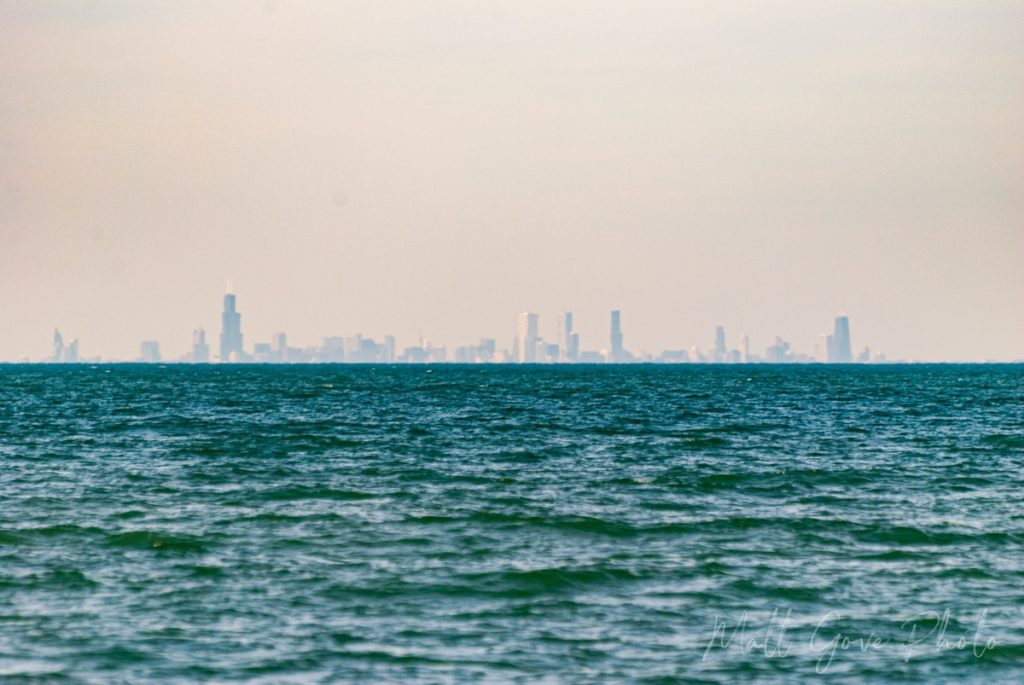
Advantages of Visiting in the Winter Offseason
There is one major reason to visit Indiana Dunes National Park during the winter offseason: the lack of crowds. When I visited in early December, there were certainly a few other people out and about, but I largely had the place to myself. You don’t have to worry about traffic or parking, even in places where parking is typically very limited. And being able to shoot photos and videos on a nearly empty beach is simply magical.
Furthermore, the low sun angle in the wintertime makes for some really beautiful light on the dunes for landscape photography. The sun remains high enough in the winter that you can still get shots of the brilliant turquoise, blue, and green waters in the middle of the day. And with sunset being so early, you’ll be done with your sunset shoot long before dinner.
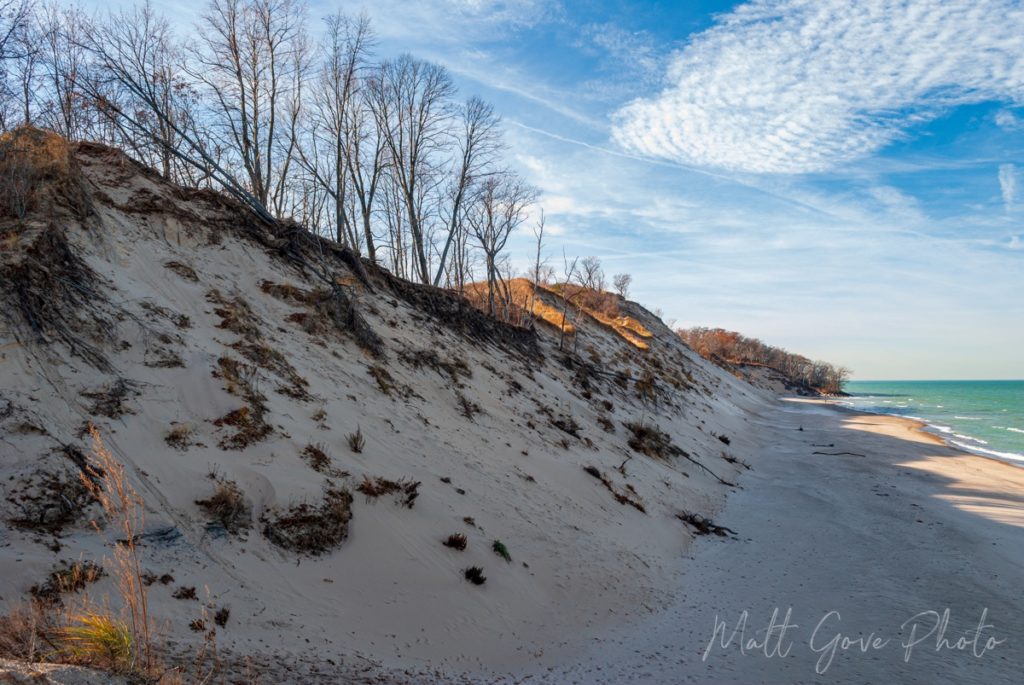
Conclusion
Indiana Dunes is one of America’s newest, most diverse, and most underrated National Parks. Regardless of your interests, hobbies, and passions, the park offers outdoor activities, places to explore, and stories to tell for everyone year round. Have you been or are you planning to go? What was your favorite part? What are you most looking forward to? Let us know in the comments below.
Top Photo: The turquoise waters of Lake Michigan shimmer under the brilliant sunlight
Indiana Dunes National Park, Indiana – December, 2021